Georgia (yes, the country in the Caucasus, not the US state) might not be one of the first destinations that you have in mind when planning your next trip, but trust me – it should! Located between Europe and Asia, the Caucasian country is quickly becoming a Mecca for outdoor lovers and adventure seekers.
Why travel to Georgia? Here are five really good reasons.
Table of Contents
#1 Explore the Hiking-Heaven
Fresh air, green mountains, lush valleys, glacial lakes and waterfalls. Just you and wild, untouched nature. Does that make you heart beat faster? If so, you should definitely explore Georgia’s National Parks, off-the-beaten-path treks and hidden hiking trails.
Contrary to popular belief, the highest mountain range in Europe are not the Alps – it is (surprise) the Caucasus. Approximately 85 % of Georgia is covered in mountains. A landscape that not only attracts ski and snowboard enthusiasts, but it also makes the region a hiking heaven. In order to find the hiking trails and mountain slopes (mostly) free from ice and melting snow, you should travel to Georgia in late spring and early summer.
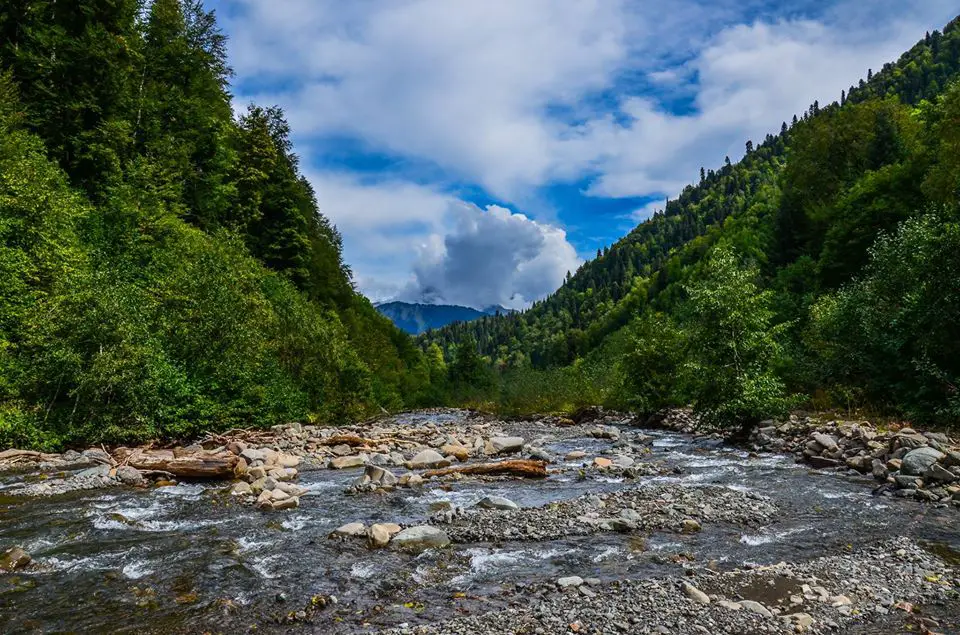
Lagodekhi National Park
First of all, you cannot travel to Georgia without visiting Lagodekhi National Park, the oldest protected park in the country. Hike to Black Rock Lake and enjoy breathtaking views and stopovers at icy cold crystal clear waterfalls on the way. If you are lucky, you will spot red deer, Eurasian lynx, grey wolf, or even a brown bear on the way. This hike usually takes three days, however, if you prefer shorter trips, there are plenty of trails that allow you to explore all parts of the park within a day.

The Transcaucasian Trail
Can there be a better reason to travel to Georgia than a piece of nature that has been called one of the world’s greatest places by the Time Magazine? The Transcaucasian Trail is a long-distance hiking trail through Georgia and Armenia, connecting roughly two dozen national parks and protected areas in the region. If you don’t have enough time to walk the whole 3000km, rather start with a 10-day trek though Georgia’s Svaneti region. With changing landscapes from deep forested valleys to high alpine meadows, it crosses five major passes. Keep in mind, it is only completely snow-free in peak summer. You will start in Chuberi and stop in Nakra, Becho, Mestia and Adishi. In the end you will reach the UNESCO protected village of Ushguli in Upper Svaneti. It is the highest village in Svaneti and overlooked by Mount Shkhara, the highest point in Georgia with 5193m.
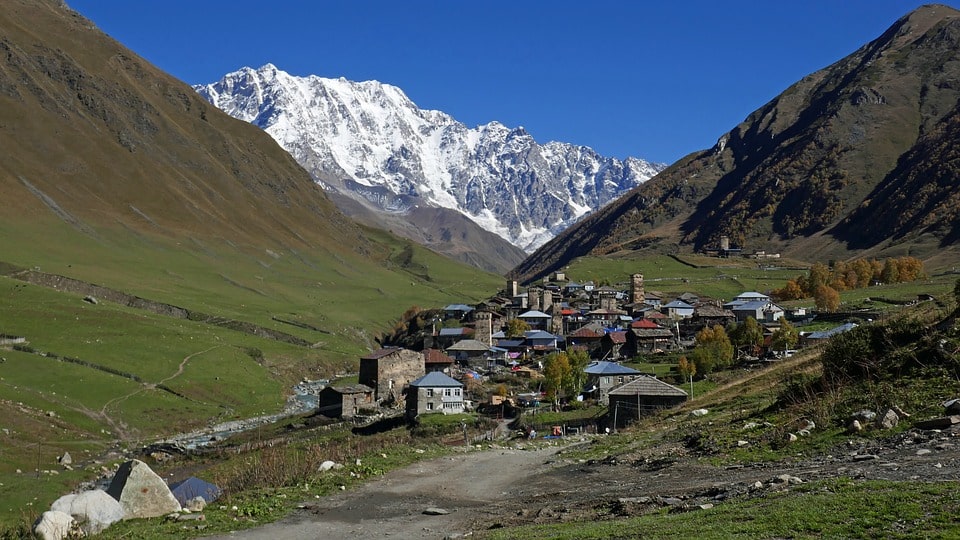
Matskhvarishi to Lentheki
If you are a rather experienced hiker, go on the three-day excursion from Matskhvarishi to Lentheki. On the first day of the trek you will pass the St. George Church of Lahili and the Church of St. Michael before reaching your camp for the night after 12km, around 6 hours of breathing in the freshest air that you can possibly imagine and a bunch of stunning views. The second day of the trek will be the hardest but also the most rewarding, as you will reach the highest point of the route, Mount Chkeeru. Day three awaits with the longest hike, however, the terrain is not nearly as challenging as the previous days and you will enjoy a delightful descent to Lentheki.
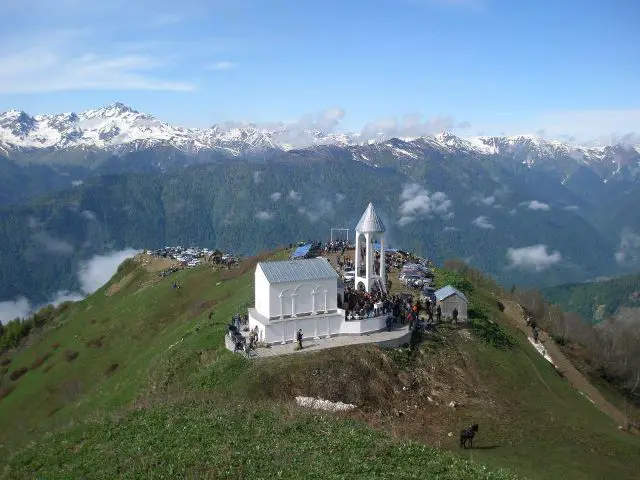
Mount Kazbek
Mount Kazbek is the tallest mountain in Eastern Georgia and with 5047m almost as high as Mount Shkhara. So, if you want to make it to the top, be prepared for a physically demanding hike, partly over snow and ice. In total, it will take you four days to make it up and down and due to the height and difficulty level of this mountain trek, you should do the climb with an experienced guide. You’ll trek one of the wildest routes in the Caucasus and afterwards you’ll be able to say that you have climbed a 5000-er. This is real bucket-list material right here.
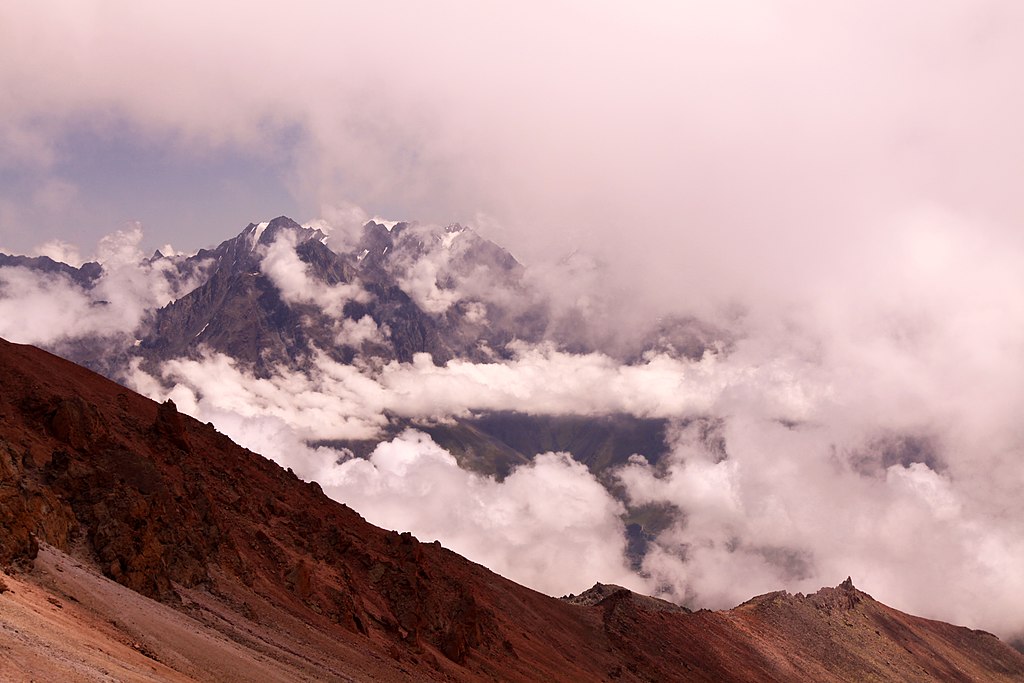
#2 Discover Georgia’s Rich History
Georgia (Georgian: Sarkatvelo/ საქართველო) is bounded by Russia to the north, Armenia and Turkey to the south, Azerbaijan to the east and by the Black Sea to the west. Though quite unremarkable on the world map at first glance, Georgia not only has its own language, it also holds a rich cultural heritage and unique history.
So, if you are into ancient stones and mystic ruins, here we go!
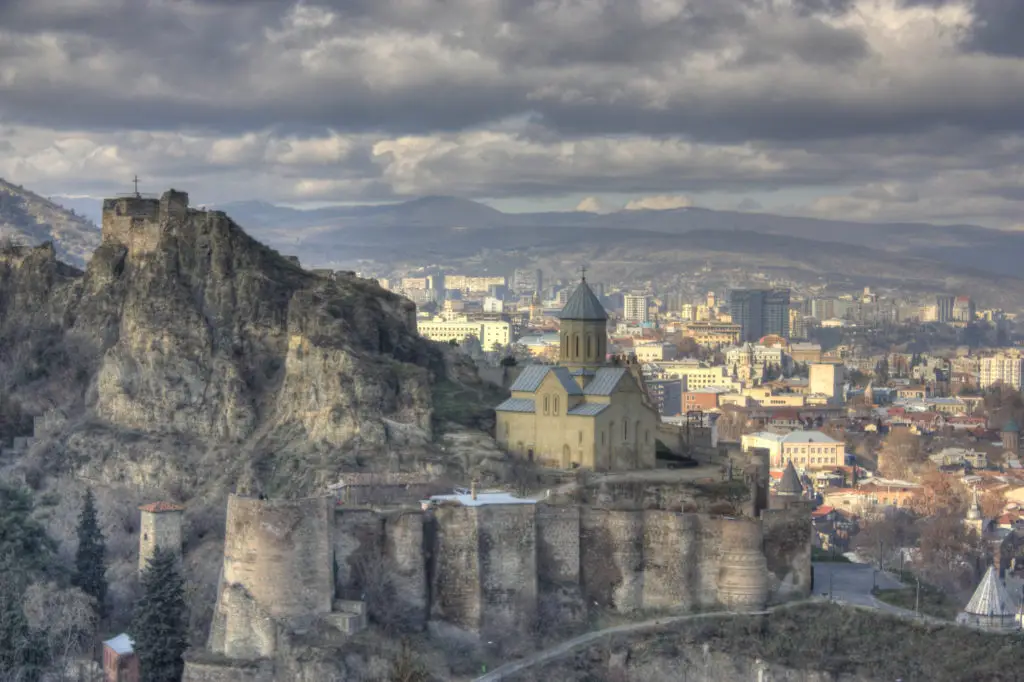
Narikala Fortress
Whether you travel to Georgia by plane and start your trip from Tiblisi or pass the capital while touring over land, a stay in this vibrant city should be very high up on your list. When in Tiblisi, start your excursion into Georgia’s rich history by paying the Narikala Fortress a visit. It was built in the 4th century and serves as an ancient symbol of the city’s defence. The fortress was constructed by the Persians and significantly expanded by the Arabs in the 8th century. Although an earthquake partly destroyed it in 1827, the main walls of the fortress are still well preserved.
To get to the top you can either take the cable car or walk. I would personally recommend you to walk, if you can. Start the hike just before sunset, bring a beverage and enjoy one of the best views the city has to offer.
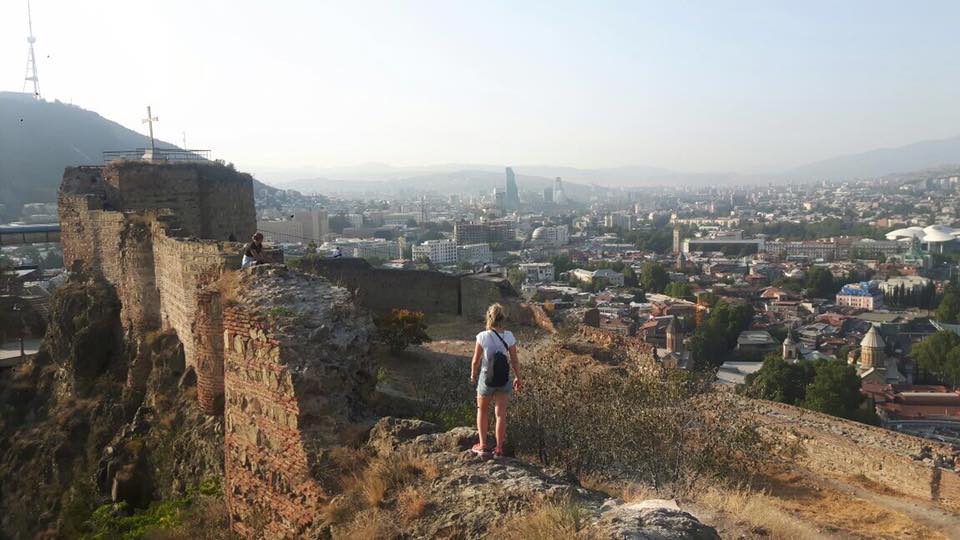
Georgia’s Golden Age
Did you know? During the medieval period (between the 10th and 13th century) a Georgian kingdom existed. Aside from today’s Georgia it also included large parts of present-day Azerbaijan, Armenia, eastern Turkey and northern Iran. What we now call Georgia’s Golden Age (or the Georgian Renaissance) is mainly the period between the 12th and early 13th century. Towards the end of that time the country was governed by Queen Tamar, the first female ruler of Georgia. To honour her 29-year reign, which is considered the most successful in the country’s history, Tamar is known today as the King of Kings. (King. Nice gesture, but seriously, Georgia?)
At its zenith the Georgian Kingdom was characterized by a cultural revival of literature, architecture and philosophy. It was also considered a center of Christian culture and learning. Both still plays an important role in the national and regional identities of the Georgians today. It has left behind a number of monasteries, castles and cathedrals that allow you to catch a glimpse of what the Kingdom used to looked like before it collapsed into anarchy under the Mongol attacks in 1466.
Vardyia Monastery
I highly recommend you to check out Vardyia Monastery, which was founded by Queen Tamar in 1185. This underground stone palace is built into the side of a mountain (Lord of the Ring-fans, this is for you!) and contained 6000 apartments, distributed over 13 levels, including a throne room. It was constructed as protection against the Mongols, only accessible via hidden tunnels. That strategy worked out quite well until an earthquake destroyed major parts of the mountain slope city in 1283.
Soviet Rule
You will also be able to spot some traces of the more recent history in Georgia, the time under Soviet rule. Lots of grey monuments and buildings remind of decades of the USSR’s influence. Georgia, birthplace of Joseph Stalin, was declared a Soviet state in 1921. Although the Soviet Union fell in 1991, their architectural heritage survived. And today, it partly still serves as housing for thousands of Georgians.
Explore more historical and beautiful places you have to visit in Georgia.
#3 Travel to Georgia to Taste its Wine
Georgia has a deeply rooted wine culture. In fact, Georgians claim to be the creators of wine. For at least 8000 years, Transcaucasia’s fertile valleys and slopes have been used for grapevine cultivaton.
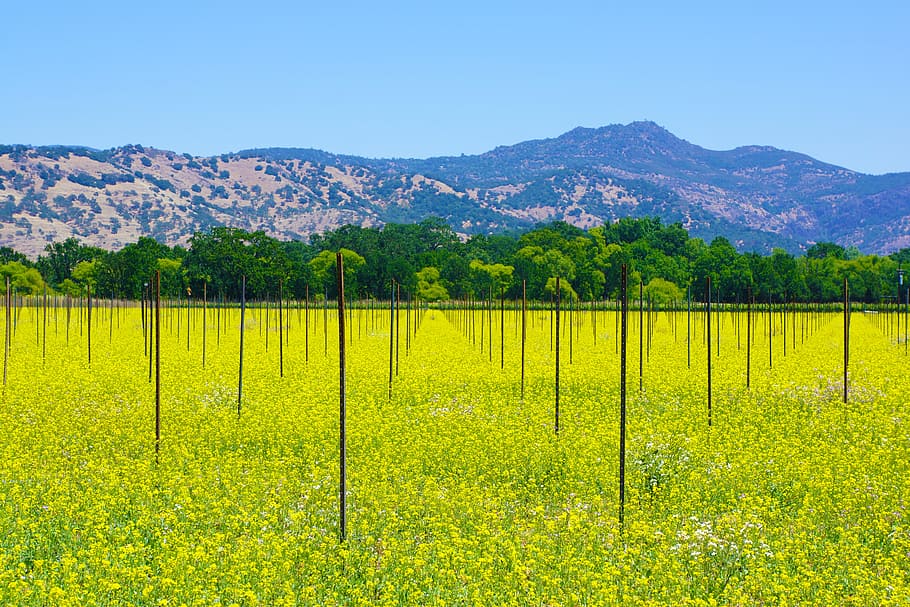
Georgian wine-making is an art that involves so-called kvevris, large pottery vessels. Once the pressed juice has been poured in, they are sealed for at least five to six months. When the wine has been bottled, a mash of pips, skins and stalks remain. The winemaker then distils it into a brandy called chacha. This tradition is even part of UNESCO’s Intangible Cultural Heritage List.
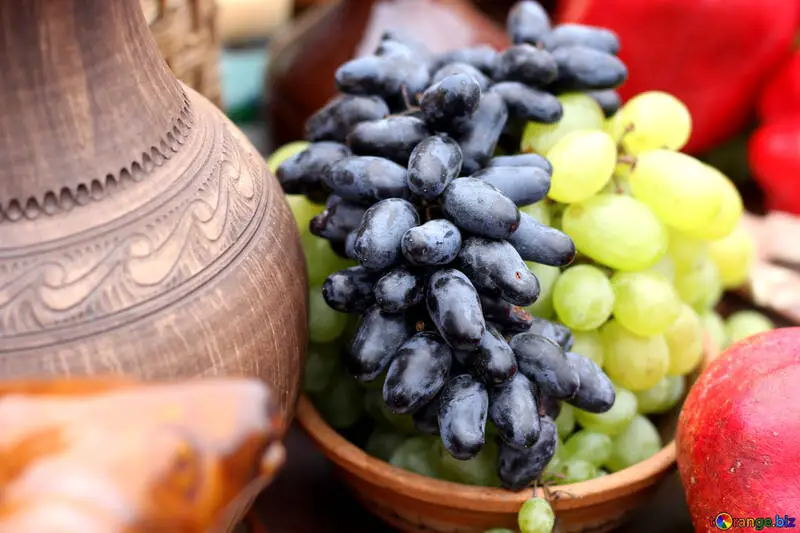
In October, the whole nation comes together for Rtveli, the annual grape harvest. Travel to Georgia between late August and mid November and honour its ancient wine-making traditions. You will get an understanding of how intertwined the wine culture is with Georgian families’ and communities’ pride and identity. While hitchhiking the famous wine route, I met a farmer and his family who introduced me to the secrets of the perfect wine. In return, I (when finally sober again) ended up helping with the harvest.
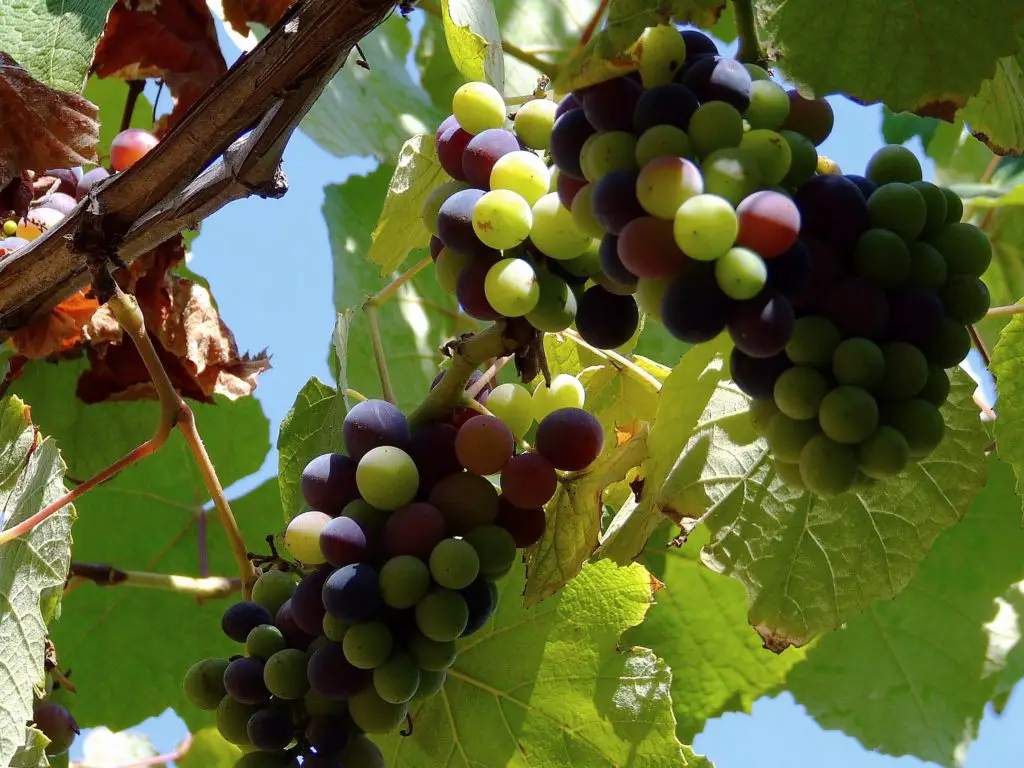
In good company and a beautiful scenery, there’s no better place for a wine-tasting. Travel to Georgia and check out Kakheti, Kartli, Imereti, Racha-Lechkhumi and Kvemo-Svaneti, Adjara and Abkhazia, some of the best known wine regions.
#4 Enjoy Georgian Culinary Art
The Georgian cuisine is characterized by different herbs and spices, salty snacks and a variety of meat dishes. (However, many are also available in a vegetarian version.) There’s enough to try a new traditional dish every day. I promise, it will make you fall in love with Georgia. Here are a few examples to stimulate your taste buds:

Khinkali are dumplings, typically stuffed with meat (usually a mix of pork and beef) and spices. They are one of the national dishes of the country. Without having tried Khinkali, you haven’t truly experienced Georiga.
You get Khachapuri in different styles; in general it is pastry topped with melted cheese, egg and butter. (If the perfect hangover cure exists, you will probably find it in Georgia.)
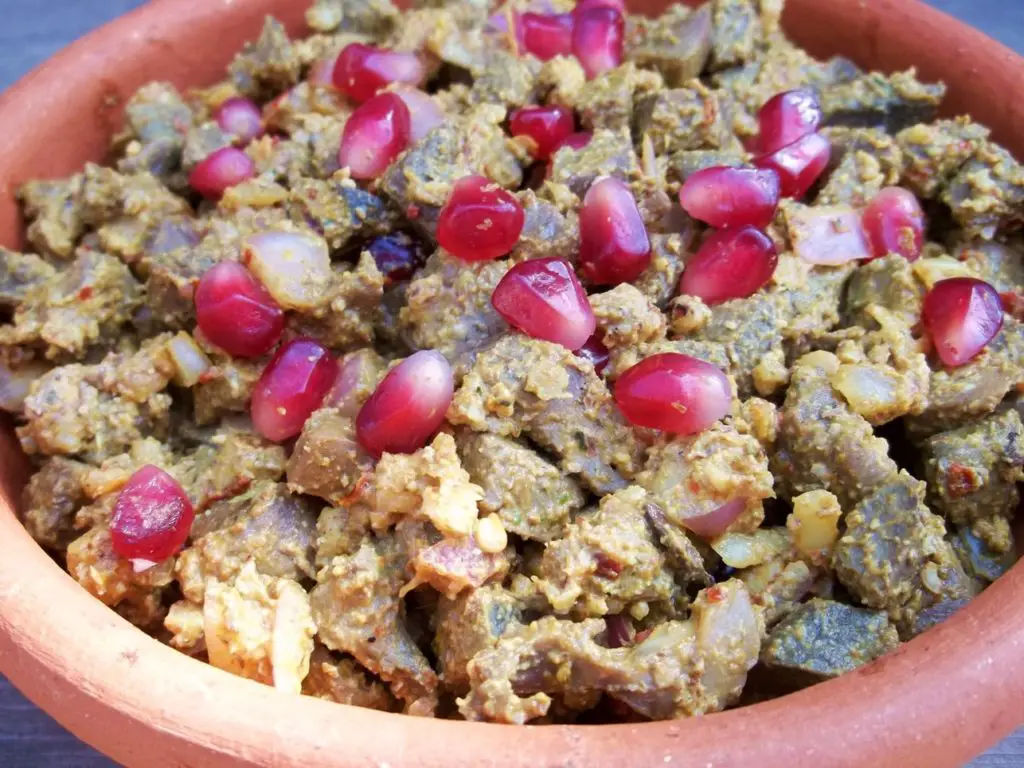
Kuchmachi is a combination of pork/chicken hearts, livers and gizzards mixed with walnuts and pomegranate seeds. It might not sound too appealing to everyone, but it is worth a try! If this dish isn’t for you – the next one is vegetarian.
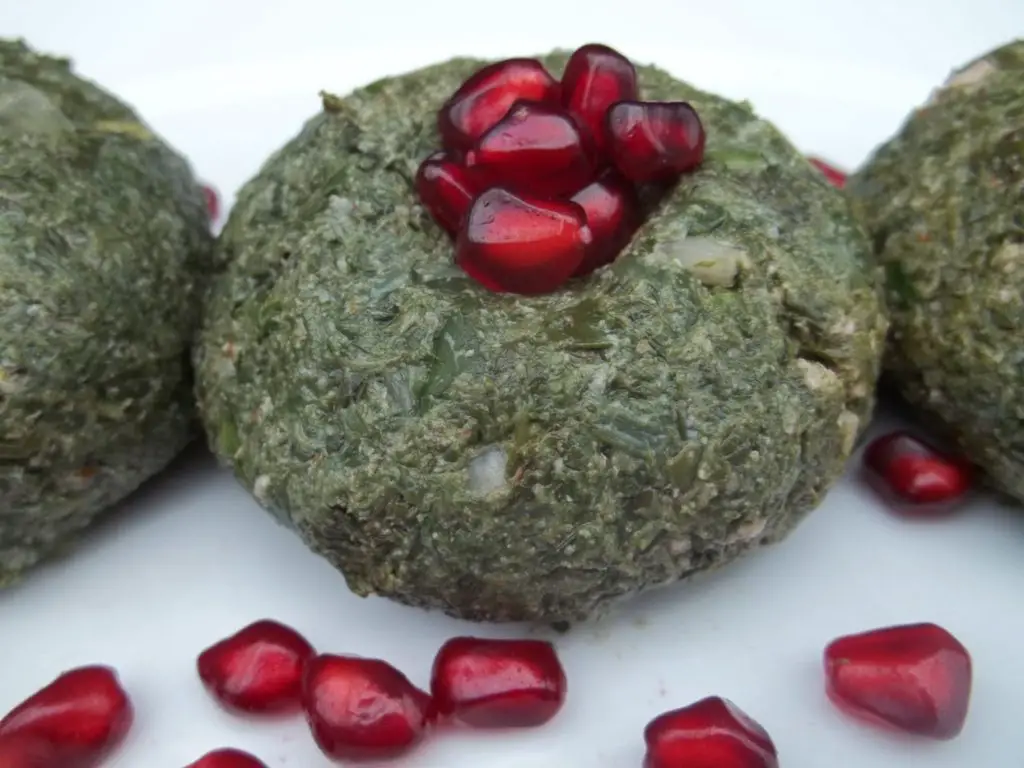
My personal favorite is Pkhali, a meal made of minced vegetables. It often includes eggplant, spinach, beans and beets, mixed with ground walnuts, garlic, onions, vinegar and herbs.
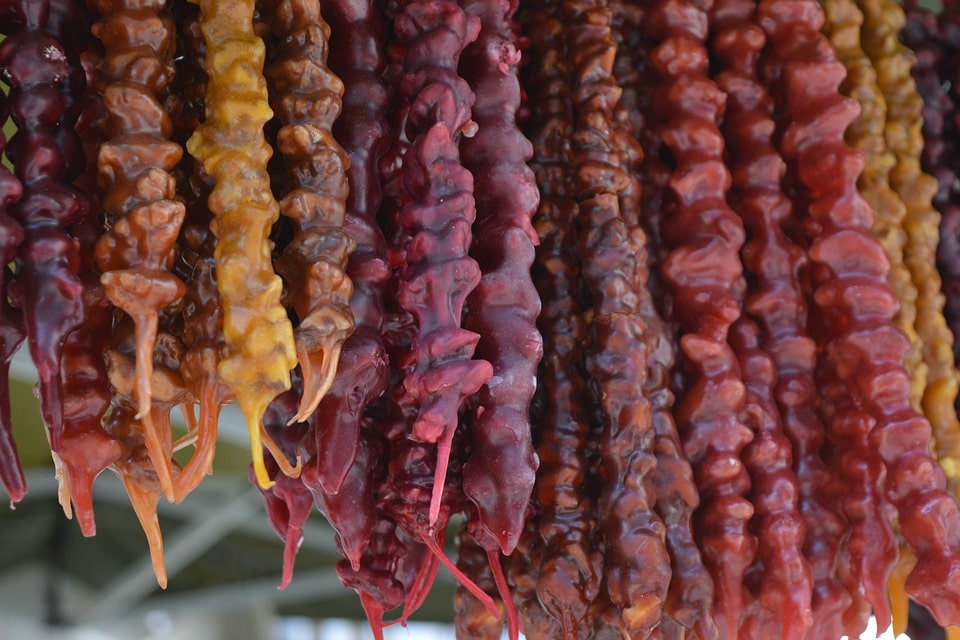
There are not too many sweet dishes that are typically Georgian, but if you have a sweet tooth, try Churchkhela. The candle-shaped candy consists of different kinds of nuts, chocolate or raisins, dipped and dried in thickened grape juice.
#5 Experience Georgian Hospitality
Georgia is known to be extremely safe, in fact, it has one of the lowest crime rates in the world. During my stay I always felt very secure in all parts of the country. Even in Tiblisi, people would leave their restaurant table with valuables on it for a few minutes and charge their phones and lapops unsupervised in hostels and cafés. When is the last time you have observed something like that in any other European capital?
To get from A to B, I mainly hitchhiked. And I never waited longer than 5 minutes for the next ride. I also always left the cars and trucks with fresh food, a bottle of chacha or new phone numbers and Facebook friends. It didn’t pose a problem at all that the people I met on the road rarely spoke English and my Georgian and Russian (which is commonly spoken by almost everyone) practically don’t exist. Everyone would just stick to their own language and from time to time attempt to repeat random vocabulary and use hands and feet to share stories. (Luckily, there is modern technology and here I am, still Google-translating Facebook messages from my Caucasian acquaintanceships).
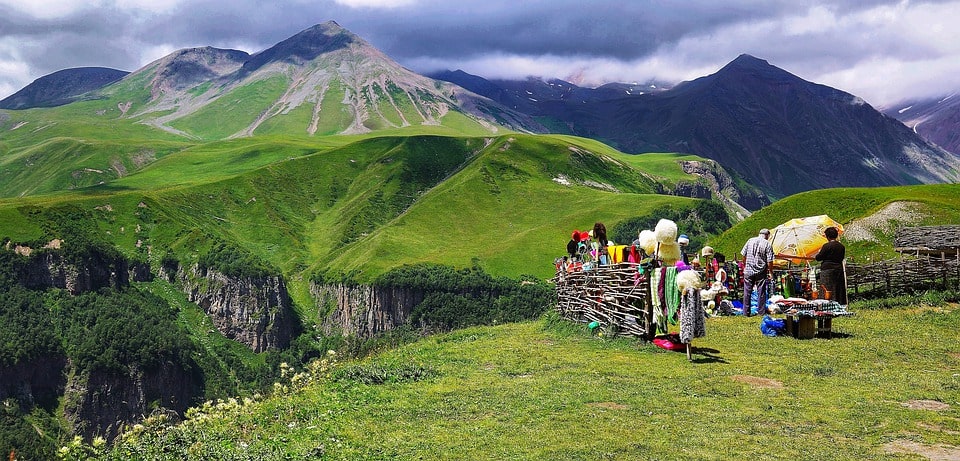
To sum it up: If you want to take a break from daily stress and be surrounded by incredibly nice people in a relaxed atmosphere, enjoy breathtaking views and fresh air, discover secrets of history, try traditional food and get tipsy in stunning sceneries – travel to Georgia.
Plan your trip to Georgia here!

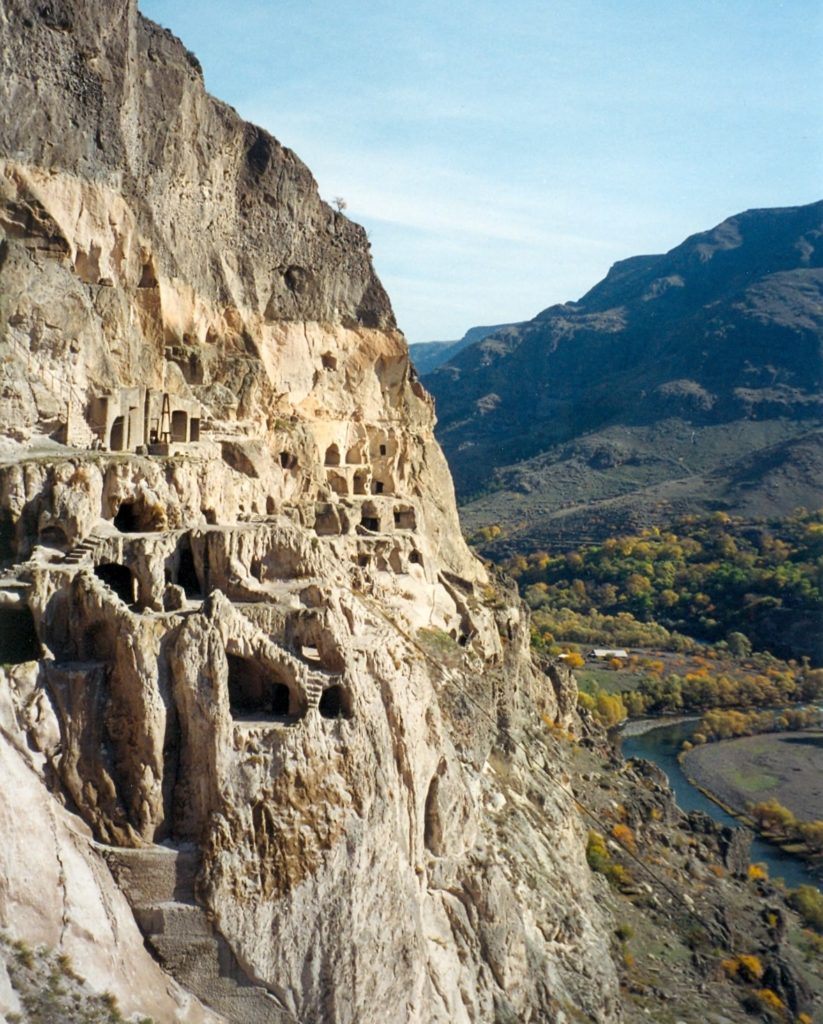
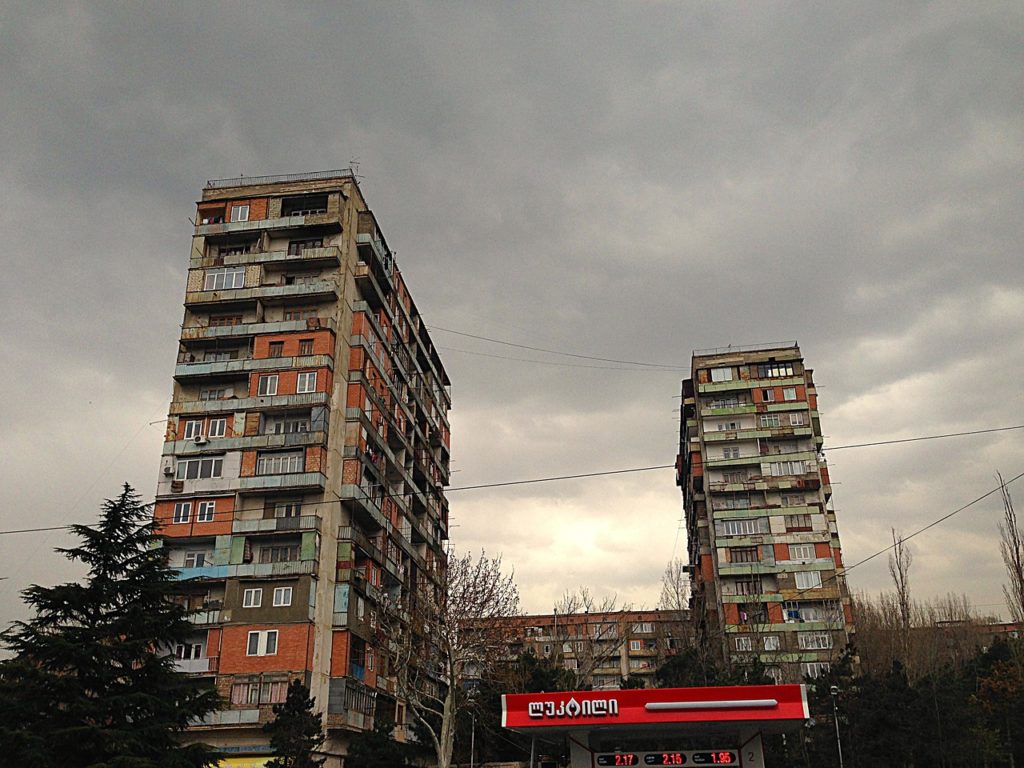
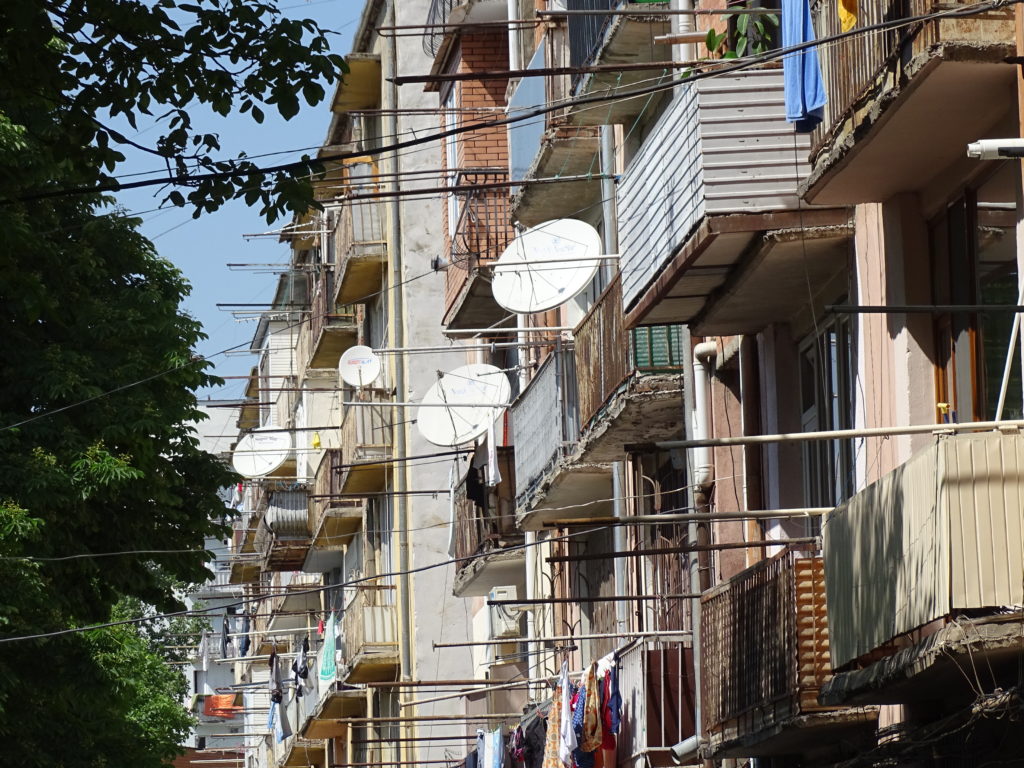

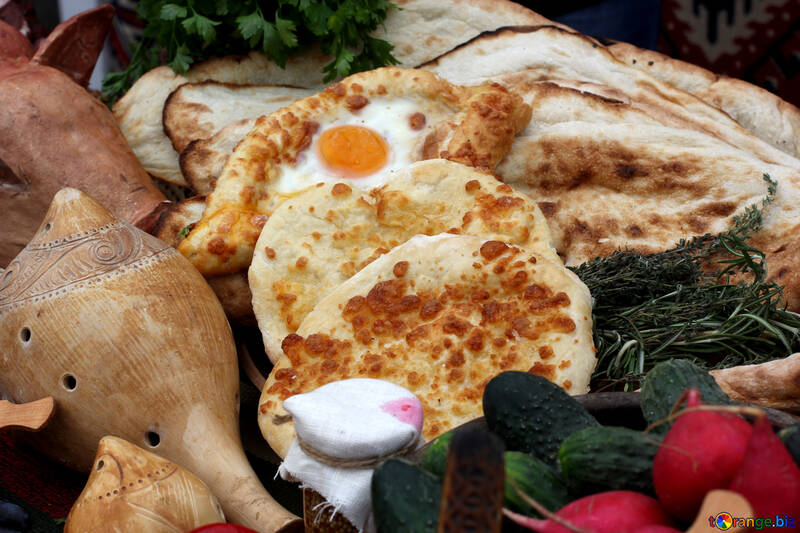

Ada
Wednesday 8th of April 2020
Hi Leoni, thanks for the inspiring travel report with the amazing photos! I really enjoyed your blog. Take care and carry on like this :-) Ada (Germany)